Xylophanes rhodotus
Xylophanes rhodotus
Rothschild, 1904
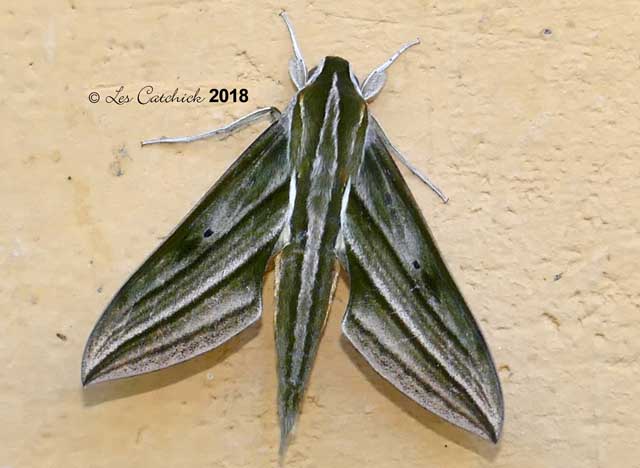
Xylophanes rhodotus, Owlet Lodge, Abra Patricia, Amazonas, Peru,
September 30, 2018, copyright/courtesy of Les Catchick, id by Bill Oehlke.
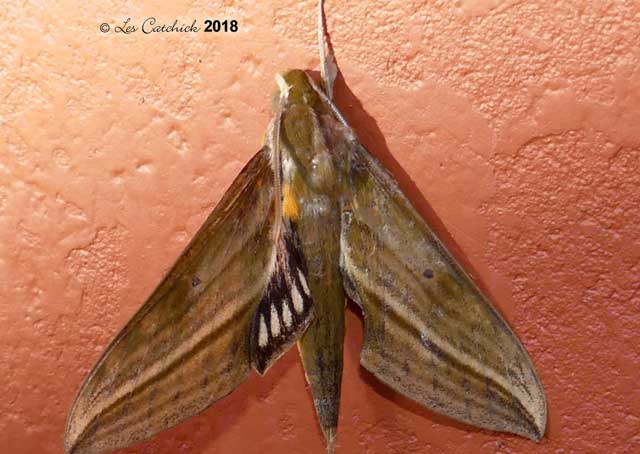
Xylophanes rhodotus, Owlet Lodge, Abra Patricia, Amazonas, Peru,
September 30, 2018, copyright/courtesy of Les Catchick, tentative id by Bill Oehlke.
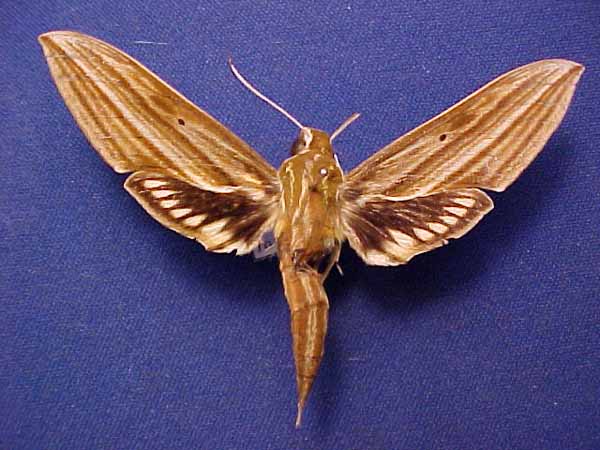
Xylophanes rhodotus courtesy of John Vriesi.
This site has been created by Bill Oehlke.
Comments, suggestions and/or additional information are welcomed by Bill.
TAXONOMY:
Family: Sphingidae, Latreille, 1802
Subfamily: Macroglossinae, Harris, 1839
Tribe: Macroglossini, Harris, 1839
Genus: Xylophanes Hubner [1819] ...........
Species: rhodotus Rothschild, 1904
|
DISTRIBUTION:
Xylophanes rhodotus moths fly in
Peru (specimen type locality): Amazonas: Abra Patricia: Owlet Lodge (LC); Pasco: Oxapampa; and
Bolivia:
Cochabamba: Chapare, Yunga del Espíritu Santo. |
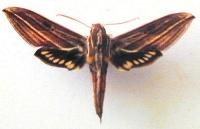
|
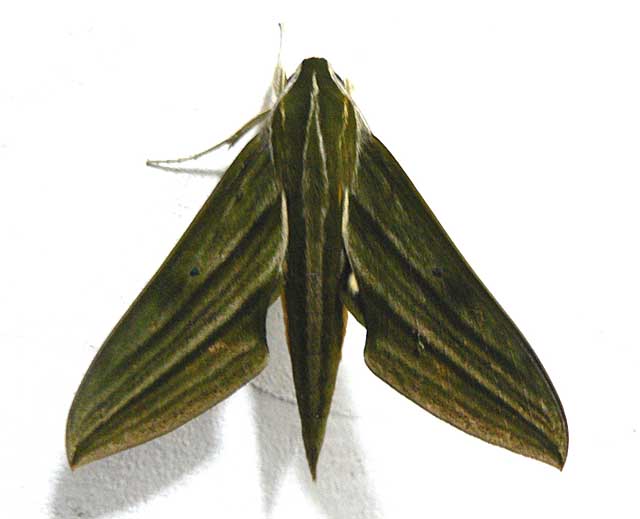
Xylophanes rhodutus male, Abra Patricia Lodge, Amazonas, Peru,
November 3 2008, 2100m, courtesy of Bob Curry.
"Intermediate between Xylophanes eumedon and Xylophanes titana.
"Tegula with a golden medial line (as in Xylophanes titana). Dorsal lines of upperside of abdomen similar to those of
Xylophanes eumedon but pale lines broader and less well defined, divided medially by an indistinct, thin olive-green line that become broader and more distinct
towards the abdomen base; black basal and yellow lateral abdominal patches less developed than in Xylophanes eumedon.
"Pattern of forewing upperside as in Xylophanes titana but much darker, so that the only conspicuous pale area is the space between the third and fourth
postmedian lines; discal spot larger than in Xylophanes eumedon and Xylophanes titana.
"Very similar to Xylophanes titana but paler.
"Hindwing upperside with pale yellow spots of median band sharply defined and distinct (as in Xylophanes aristor)." CATE
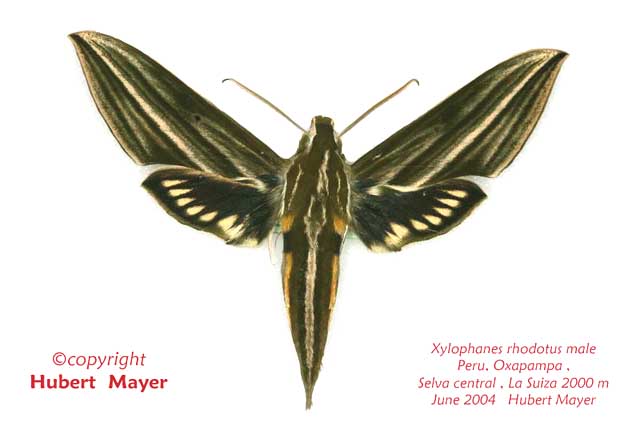
Xylophanes rhodotus, Oxapampa, Pasco, Peru, June, 2004,
2000m, courtesy of Hubert Mayer.
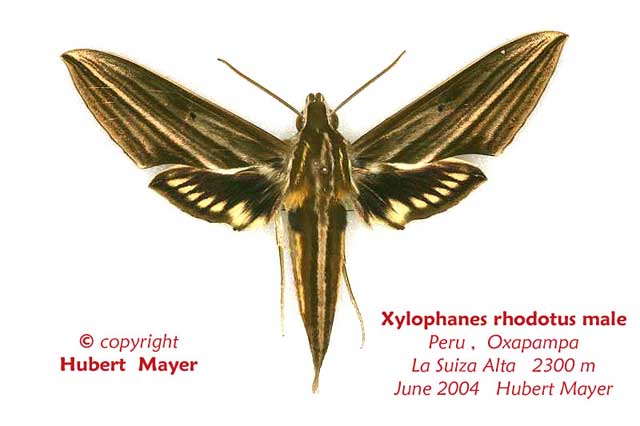
Xylophanes rhodotus, Oxapampa, Pasco, Peru, June, 2004,
2300m, courtesy of Hubert Mayer.
FLIGHT TIMES:
Xylophanes rhodotus adults fly in June (HM) and September (LC) and November (BC) and probably in other months.
ECLOSION:
Pupae probably wiggle to surface from subterranean chambers just prior to eclosion.
SCENTING AND MATING:Females call in the males with a pheromone released from a gland at the tip of the
abdomen. Males come in to lights very readily, but females are seldom taken in that way.
EGGS, LARVAE, PUPAE:
Larvae probably feed on
members of the Rubiaceae or Malvaceae families.
Moths emerge approximately one-two months after larvae pupate.
Use your browser "Back" button to return to the previous page.
Goto Main Sphingidae Index
Goto Macroglossini Tribe
Goto Central American Indices
Goto Carribean Islands
Goto South American Indices
Goto U.S.A. tables






